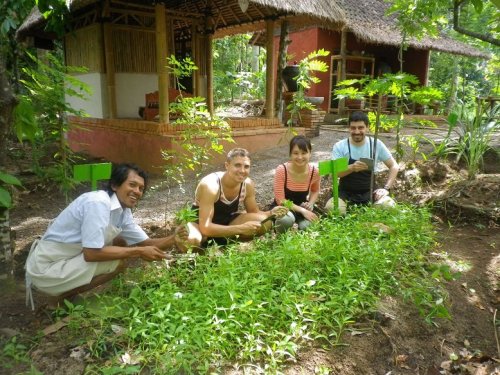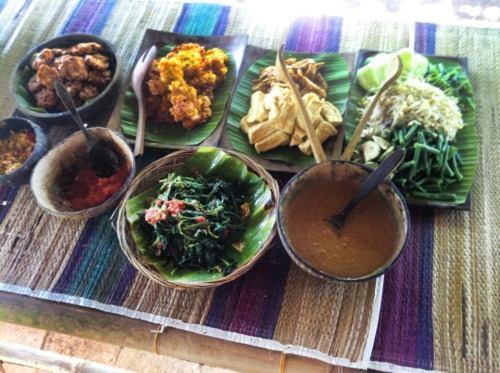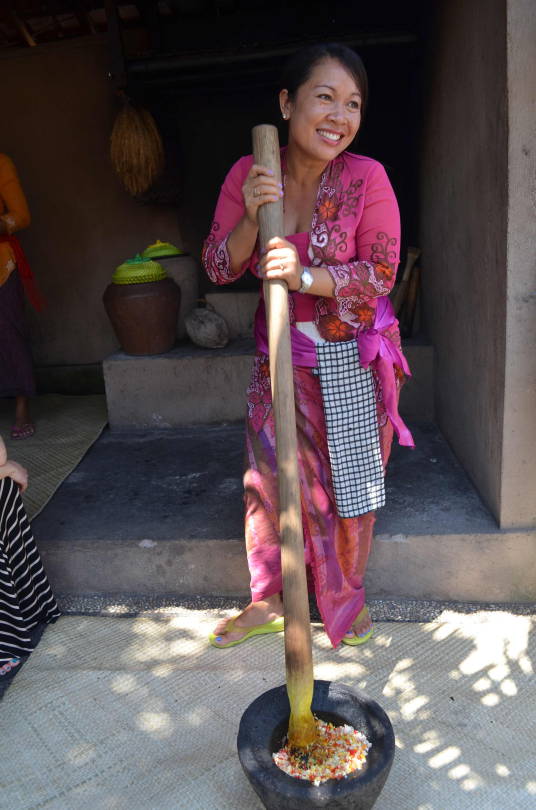Indonesia is rich in spices, is also rich with traditional drinks that are fresh, unique, and healthy. Many Indonesian people believe that the use of a mixture of spices as the manufacture of beverages would provide health benefits so that the typical drinks
Indonesia is still favored by the people.
Indonesia lined up along the equator have a wide variety of typical drink that is refreshing and healthful. Like
food, drinks in each region also has its own peculiarities.
Some traditional drinks are very popular in Indonesian society. Various types of drinks are often served in formal occasions or casual events.
Drinks
The existence of a typical drink from Indonesia is a picture of a typical Indonesian culinary richness that is not owned by any country, including:
Bajigur

Bajigur is one typical drink from the area of West Java. This drink has a sweet and savory taste because it is made from coconut milk and brown sugar. This drink is usually served in a relaxed moment and leisure, and is believed to increase appetite. Bajigur scent that mingled smell of pandan leaves presents its own sensation of this traditional beverage menu. Moreover as it flows through the esophagus and ending in the stomach. Warmth coursed through the body immediately. Bajigur usually served with boiled yam, boiled bananas or boiled peanuts.
Bajigur easily found in West Java, consumers were most people in the area. Including tourists from outside the region who are curious about this drink. This drink is safe to be consumed by small children to adults. Bajigur main ingredient is palm sugar, and coconut milk. To add flavor, also mixed a little ginger, salt and vanilla powder.
Bandrek
This drink is suitable to be consumed in cold weather. Bandrek made of ginger and brown sugar, as well as additional spices such as cinnamon, cloves and pandan leaves.
Sekoteng
Sekoteng is drink native of Central Java with the ginger flavor that served hot. Other ingredients are usually mixed into a drink sekoteng are mung beans, peanuts, pacar cina, and chunks of bread. Sekoteng usually sold around by using a cart to carry. One side of ginger water in the pan along with the stove while the other side is a mixture of ingredients and place to prepare sekoteng.
Wedang Jahe
Wedang originated from Javanese language which means ‘hot drink’. Many variants wedang is similar but not identical. As the name implies, wedang jahe is made from ginger and palm sugar, sugar, cardamom, cloves, lemongrass, and black pepper. Drinks from the land of Java is usually added pandan leaves to make it more delicious.
Wedang Ronde
Wedang ronde is a traditional beverage that comes from Java. Wedang itself means drinks. Wedang ronde is steeping ginger water containing balls, called ronde. Usually served with roasted beans, kolang-kaling, and pieces of bread.
Wedang Uwuh
History of Java’s traditional beverage store various stories. Many types of traditional beverage that is born of the creativity or trial and error. There are various types wedang, namely wedang ginger, wedang ronde, wedang secang, and wedang uwuh.
Of the various types of wedang, wedang uwuh a unique one when seen from its name. Wedang which in Javanese means to drink, while uwuh itself means garbage. But do not be mistaken, this is not just any wedang garbage, but garbage is meant here is the organic foliage, which of course contains a lot of benefits.
Some of the benefits of this uwuh wedang, namely to lower cholesterol, as anti-oxidants, refreshing the body, relieve fatigue, cure and prevent colds, and certainly can warm the body.
Bir Pletok
It’s main ingredient is ginger, cardamom, lemongrass, cinnamon, kayu secang, and sugar.
This drink is perfect to drink at night to keep warm. Name pletok also unique origins. In the Dutch colonial period and the Japanese invaders often seen drinking beer in checkpoints.
Betawi people do not want to lose. They make their own beer that put into a bamboo tube and mixed with ice cubes. When the drinks in a bamboo tube shaken, will hear a pletok-pletok so that named pletok.
Bir Pletok is believed to have various benefits, including relieving hot, prevent colds , and warm the stomach.
Cendol
Cendol is typical of Indonesia beverage made from rice flour, served with grated ice, liquid palm sugar, and coconut milk. It was sweet and savory. In the area of Sunda, the drink is known as cendol while in Central Java known as es dawet.
Rice flour is processed in a way given the green dye then printed through a special filter, so the shape of grains. At first natural dyes from pandanus leaves are used, but now used artificial food colorings.
This drink is usually served as dessert or as a snack. Matches are presented in the daytime
Es Teler
Es Teler is a drink containing pieces of fresh avocado, young coconut, jackfruit, and dilute coconut milk. Then added sweetened condensed milk and syrup. Ice can be used shaved ice or ice cubes.
Another variation of es teler containing grass jelly, kolang-kaling, pacar cina, pieces of apple, papaya, sapodilla, melons, bread, and jelly. Until es teler to be difficult to distinguish from es campur.
Es Goyobod
Popular in Garut, West Java. Many were not familiar with this ice, because only in Garut area it was. Goyobod made from water, brown sugar, flour hunkwe, salt and pandan that cooked until boiling and thick, then allowed to until frozen. After that cut into pieces a box shape. Kuah made from a coconut milk with brown sugar, salt and pandan leaves. Goyobod served with young coconut, avocado, coconut milk and shaved ice on it.

























